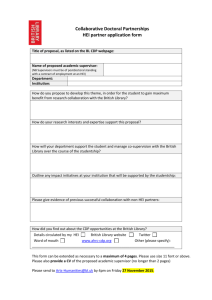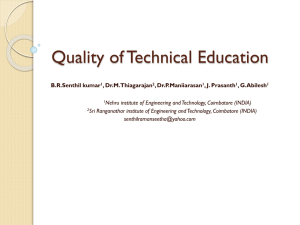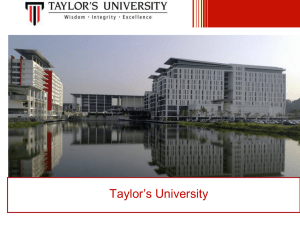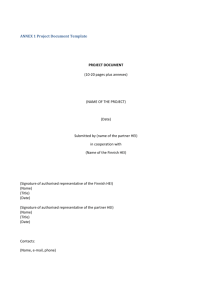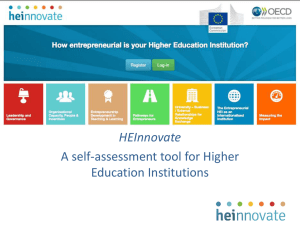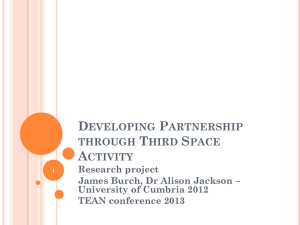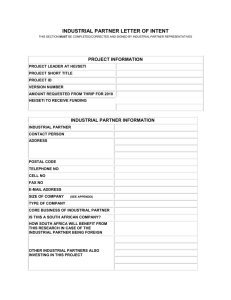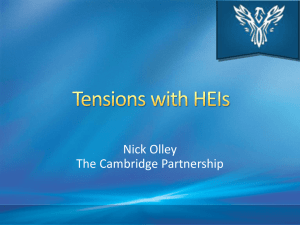View paper
advertisement
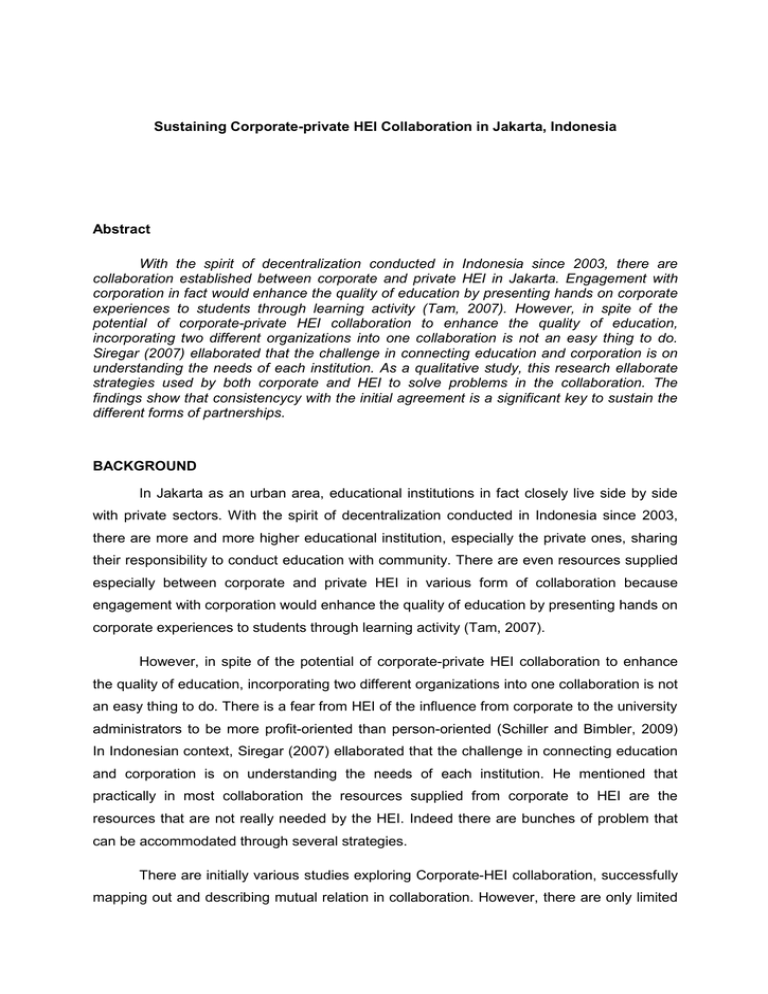
Sustaining Corporate-private HEI Collaboration in Jakarta, Indonesia Abstract With the spirit of decentralization conducted in Indonesia since 2003, there are collaboration established between corporate and private HEI in Jakarta. Engagement with corporation in fact would enhance the quality of education by presenting hands on corporate experiences to students through learning activity (Tam, 2007). However, in spite of the potential of corporate-private HEI collaboration to enhance the quality of education, incorporating two different organizations into one collaboration is not an easy thing to do. Siregar (2007) ellaborated that the challenge in connecting education and corporation is on understanding the needs of each institution. As a qualitative study, this research ellaborate strategies used by both corporate and HEI to solve problems in the collaboration. The findings show that consistencycy with the initial agreement is a significant key to sustain the different forms of partnerships. BACKGROUND In Jakarta as an urban area, educational institutions in fact closely live side by side with private sectors. With the spirit of decentralization conducted in Indonesia since 2003, there are more and more higher educational institution, especially the private ones, sharing their responsibility to conduct education with community. There are even resources supplied especially between corporate and private HEI in various form of collaboration because engagement with corporation would enhance the quality of education by presenting hands on corporate experiences to students through learning activity (Tam, 2007). However, in spite of the potential of corporate-private HEI collaboration to enhance the quality of education, incorporating two different organizations into one collaboration is not an easy thing to do. There is a fear from HEI of the influence from corporate to the university administrators to be more profit-oriented than person-oriented (Schiller and Bimbler, 2009) In Indonesian context, Siregar (2007) ellaborated that the challenge in connecting education and corporation is on understanding the needs of each institution. He mentioned that practically in most collaboration the resources supplied from corporate to HEI are the resources that are not really needed by the HEI. Indeed there are bunches of problem that can be accommodated through several strategies. There are initially various studies exploring Corporate-HEI collaboration, successfully mapping out and describing mutual relation in collaboration. However, there are only limited studies describing the problems and strategies to sustain the collaboration. Therefore, this study intends to search strategies used by both corporate and HEI to solve problems in the collaboration. THEORITICAL FRAMEWORK This study will be based on an early exploration on the possible tensions and the views of academics and administrators toward the partnership was raised by Campbell and Slaughter (1999). Based on the study by Campbell (1995, 1997, as cited in Campbel and Slaughter, 1999), the tensions that are most likely to emerge from potential conflict of interests which covers financial issues as revenue-generating through patents and licensing. Another cause for tension is insufficiency of participation of the member of both sectors of the partnership (Sanders, 2001). Involving faculty members is a problem since they do not know whom and how to contact the key person in the industry. Engaging them to communicate with the partners entails much time perhaps due to lack of training. There is sometimes a necessity to reach out beyond faculty members as volunteers to coordinate the partnership activities. METHODS, TECHNIQUES This study is a qualitative study, which emphasize on the qualities of entities and on processes on meanings that are not experimentally examined in terms of quantity, amount, intensity, or frequency (Denzin and Lincoln, 2003). Its nature as a qualitative research then will provide an understanding over complex relationship, which makes use of no single method but rather a spectrum of methods belonging to different approaches. As a case study, this study makes use of semi-structured interview and document analysis to examine the problems and how the problems solved in corporate- private HEI collaboration in Jakarta, Indonesia. DATA SOURCES The respondents of the study were purposively selected from the two HEIs under study based on the predetermined criteria. The respondents from each selected HEI include 2 administrators and 5 faculty members. RESULTS Consistent with the initial agreement is a significant key to sustain the different forms of partnerships. It indicates that both education and corporation have good intention to establish partnerships. Commitment toward the partnerships is also strengthened when both parties have good intentions. The educational institutions and their partner corporations are open and explicit in communicating their expectations toward the partnerships, which they contracted. Simple communications were done both in verbal and written forms. Meisny and Mailhot (2007) suggest that the element of good communication forestalls the expectation gap which is related to the feeling of “being in the dark” and the absence of structured and clear approach. Open communication supports the establishment of the element of trust between the private HEIs and their partner corporations. Harman (2001) raises the issue that might be blocking or slowing down of the free flow of research findings among members of the academic community and the public. Regarding the partnerships identified in the select private HEIs, Seminar and Training and External Mentoring gain strong commitment of the personnel of both parties. These partnerships and their levels of commitment are Collective with regard to the involvement among the Executives, Mid-level Executives, and corporate employees. Their acts are driven by the intention to manage knowledge, develop human resource, and build community. Meanwhile, Internship, Recruitment, Sponsorship, and Research partnerships are rather flexible partnerships. These types of partnerships and levels of commitment is Collaborative since Mid-level Executives and corporate employees are actively involved and driven by the willingness to build community, develop human resources, manage knowledge, and build image. In addition, Company Visit involves Mid-Level Executives solely in planning, organizing, implementing, and monitoring partnership with the motivation to manage knowledge. Hence, this type of partnership and level of commitment is Comprehensive. EDUCATIONAL IMPORTANCE OF THIS STUDY The result of this study enriches educational management theory, practice, and research. As a theory, the findings offer strategies to accommodate or solve mismatch corporate-HEI collaboration and be the basis of policy making for the collaboration. This finding shall convince administrators and corporate actors that winding road in corporate-HEI collaboration will bring betterment for both side. CONNECTION TO THE THEMES This study redefines Education, Learning, and Teaching in 21st century by presenting strategies to conduct qualified education through corporate-private HEI collaboration. The research is specifically aligned with Future Thinking as the subtheme since this research taking out corporate-private HEI collaboration as one idea to provide intersector collaboration in the 21st century. REFFERENCES Campbell, T.I.D, & Slaughter, S. (1999). Faculty and Administrators’ Attitudes Toward Potential Conflicts of Interest, Commitment, and Equity in University-Industry Relationship. The Journal of Higher Education, 70(3), 309-352. Sanders, M.G. (2003). Community Involvement in Schools: From Concept to Practice. Education and Urban Society, 35, 161-180. Sanders, M.G. (2001). The Role of “Community” in Comprehensive School, Family, and Community Partnership Programs. The Elementary School Journal, 102(1), 19-34. Schiller, D. and Liefner, I. (2007). Higher Education Funding Reform and UniversityIndustry Links in Developing Countries: The Case of Thailand. Higher Education, 54, 543-556. Tam, F.W. (2007). Rethinking School and Community Relations in Hong Kong. International Journal of Educational Management, 21(4), 350-366. Book Sources Butler, C. (1985). Statistic in Linguistic. New York: Basil Blackwell Ltd. Caldwell, B.J. & Spirks, J.M. (2008) Raising the Stakes: From Improvement for Transformation in the Reform of Schools. London: Routledge. Creswell, J.W. (1998). Qualitative Inquiry and Research Design: Choosing among Five Traditions. Thousand Oaks, CA: Sage Publications, Inc. Flick, U., Von Kardoff, E. And Steinke, I. (2004). A Companion to Qualitative Research. London: Sage Publications, Inc.
